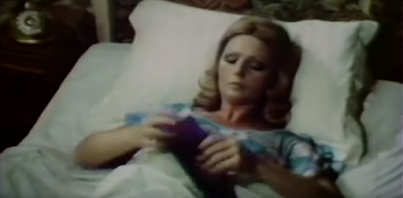"We communicate with words. That's how we understand."
Carla Pratesi (Héléne Chanel), the oldest daughter of an esteemed ambassador, is working as a high-class call girl in Rome. On her way to pay off a blackmailer who threatens to make her secret public, her car has a blowout and she is chased into the woods and strangled by a mysterious stranger. Inspector Ferretti (Alberto Lupo) quickly takes up the case and discovers a vast ring of drug smugglers and human traffickers. But each night, more women are attacked - and multiple witnesses claim that the killer is Mario Vivaldi, a famous actor. Not content to sit around and watch the press malign her family's name, Carla's sister (Marilú Tolo) decides to pursue the killer herself. Who is the killer and what motivates him to attack women? Can Inspector Ferretti stop him? And will Carla's sister be the next victim?
Night of Violence (not to be confused with Night After Night After Night) comes from the earliest period of giallo, when the genre was still figuring itself out and establishing its tropes. It has a masked killer who strikes a series of beautiful women, but this one plays out more as a police procedural, tracking not only the killer's movements, but the methodical course of the police investigation. It's very straightforward storytelling and, much like Watch Me When I Kill, the killer's identity and motivation stem from the horrors of actual 20th Century history.
• The music in this film is fantastic. The mix of Italian big band and R&B music is very hip for 1965. Composer Aldo Piga also scored A... For Assassin.
• Writer/Director Roberto Mauri would go on to write Clap... You're Dead, which also features a murder investigation on the set of a movie-within-a-movie.
• The original Italian title is Le Notti Della Violenza, so the translation should more accurately be Nights of Violence (plural).
What the Hell Am I Watching?
You read correctly - Marilú Tolo's character doesn't get a name in the movie. She's only ever referred to as "Carla's sister."
Also, Carla's sister is the only character smart enough to realize that the killer is wearing masks.
In the finale, the killer forces Carla's sister up a massive spiral staircase (an observation tower? Campanile?). When she slips and dangles off the edge, the police just stand there and look around at each other. No effort is made to help her, catch her or even run to break her fall. Rome's finest.
Fashion Moment:
Carla starts the movie off with a bang (figuratively).
But her sister is the one who really shines in a chic black dress, lush leopard coat and accent jewelry.
Later at the stakeout, she adds a fashionable newsboy hat to the look.
And finally, here's a good look at the killer's mask. Kind of looks like Michael Meyers with a mustache.
































